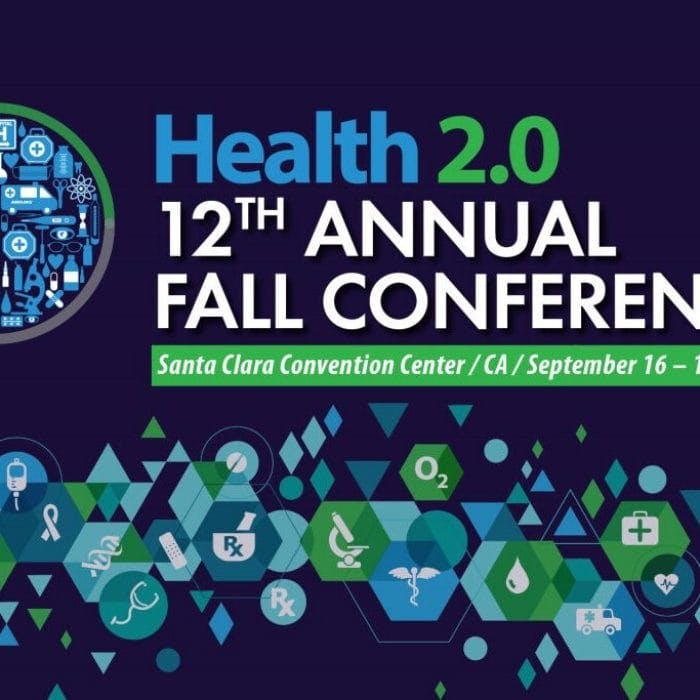This past weekend, Hopelab had the privilege to attend Health 2.0, a conference held in Santa Clara that truly encompassed all things health and tech. Healthcare providers, patients, app developers, and non-profits all gathered at the Santa Clara expo center to dive deep into the latest advances in healthcare. Here’s what we learned:
Of Course, There’s An App For That; Now AI Makes an Appearance
With panels, keynotes, and demos galore, we set out to find new innovations in healthcare that would be changing the world. On the first day of Health 2.0 alone, I think I saw about 20 application demos, as well as the day following, ten different AI or VR systems that were built to make healthcare more accessible and easier to use. Whatever the debuting product, it was built for patients, providers, or practitioners. Like Microsoft debuting VR glasses that would make it easier for medical students to explore the anatomy of the human body or patients to better understand how treatment would affect them. Apps such as Macadamian’s patient care tool that uses Amazon Alexa technology to use voice activation to connect primary care doctors with patients within seconds — whether that is via video chat or text platform. It’s incredible to see what developments are arising in healthcare, and how Hopelab may be implemented some of these strategies into our design phase when building out products. Health 2.0 exposed the number of innovations coming to healthcare systems near you. And while innovation ran rampant at the conference, there was a clear message from every level in healthcare that peer-to-peer connection isn’t going anywhere. The goal of all of this innovation is to get to the point where healthcare becomes preventative instead of reactive.
Technology is Changing Healthcare and Vice Versa
While moderators, professionals, and patients all equally emphasized the need to not remove the human from healthcare, everyone seemed to have a general understanding that technology and healthcare are becoming more married than ever before. With patient care apps being developed left and right, healthcare systems doing online door deliveries of medical supplies such as insulin to patient homes, and even new AI competencies being released, the sentiment was clear, peer-to-peer healthcare is the anchor in all of these systems. Technology makes life easier for everyone involved in healthcare systems. An important word of caution that seemed to have universally reverberated throughout the conference, however, was being aware that while sometimes these innovations can work really well for some patients and providers, it’s important to note that some of these advances may not work for every patient. Head of Stanford Medicine, Megan Mahoney notes that “As much as we want to be high tech we also want to remain high touch.” Healthcare isn’t healthcare with our human understanding.
The Unacceptables: Where Are All The Young People?
One of my favorite segments of the conference came towards the final day when the Unacceptables hit the stage. The Unacceptables was a segment surrounding some of the most important issues in healthcare that seemed to slip past the radar of some of those more prominent health challenges. Some of these presentations included topics such as physician suicide, which currently is the highest ranking percentage of career related suicides, eating disorders, with anorexia nervosa being shockingly the most fatal mental disorder according to the National Institute of Mental Health1, and the opioid crisis- which in 2016 alone claimed 42,000 lives2. All of these issues are wildly important for understanding then next generation of health issues that may arise in patient care and recovery.
I was incredibly happy to hear and learn about healthcare topics that not only don’t get enough attention but also deeply affect our demographic at Hopelab- teens and young adults. But then, that got me thinking even more- all of these health epidemics have large teen populations at their core- so where were all the teens? While extremely comforting to see 1,500+ come to a conference all about innovating healthcare, I began to realize I was if not the youngest, one of the youngest attendees there. Granted, many of these providers, physicians, and reps have had years of training or school to back up their reason for attendance, but healthcare is heavily rooted in patient care. So, with a world that will slowly be taken over by Generation Z (according to Bloomberg, Generation Z will outnumber millennials by 2028), I would think it would be important to include them in this conversation. What’s even crazier to think about is the results and key findings from our survey co-sponsored with Well Being Trust, stating that about 87% of teens and young adults have gone online for health information3 and that only about 50% of millennials have a relationship with their primary doctor. All of these innovations require a more tech-savvy generation, but what happens when that generation is missing from the conversation altogether?
Innovation, design, patient experience- all of these buzz-words have healthcare systems thinking about what and how they can make more intelligent systems. But with innovation comes wind of caution- in order to make products that benefit everyone in the healthcare system, they have to be co-designed with those users in mind. Reminding all of us, that no matter where we are on the healthcare spectrum, we all just want to be heard.
1. Insel, T. (2012, February 24). Post by Former NIMH Director Thomas Insel: Spotlight on Eating Disorders. Retrieved from https://www.nimh.nih.gov/about/directors/thomas-insel/blog/2012/spotlight-on-eating-disorders.shtml
2. Opioid Overdose. (2017, July 18). Retrieved from https://www.cdc.gov/drugoverdose/data/index.html
3. A National Survey Sponsored by Hopelab and Well Being Trust, Key Findings (2018, July 31). Retrieved from https://hopelab.org/report/a-national-survey-by-hopelab-and-well-being-trust-2018/key-findings/




